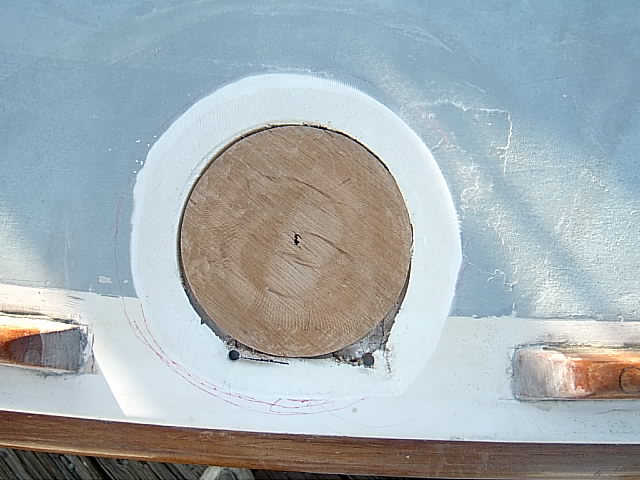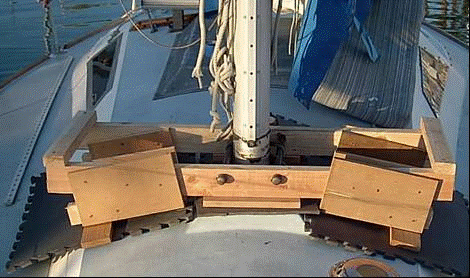Westerly GK29 Half Tonner IOR sailboat called Something Else in Alamitos Bay Long Beach California
Thursday, September 26, 2013
Acrophobia
Acrophobia is an extreme or irrational fear of heights. I never thought I was afraid of heights. Is it irrational to fear going up an aluminum straw 39 feet in the air? What if you add in the motion? At what point it is irrational? I felt safe... I had 2 halyards attached to a bosun’s chair, 1 to lift and 1 as a back up if the first one failed. It was perfectly safe. Sailors climb the mast all the time. While my boat is not this big, watch this video and tell me do you feel anything odd?
http://www.youtube.com/watch?v=ZdJlgLasCLw
Next time I go up the mast I plan to use a mountain climbing harness and ascenders. I've read others use this method to climb the mast. I got to do it, those sheaves aren't going to do themselves.
Saturday, September 21, 2013
What?
This blog is about Something Else… Something Else is a Westerly GK29 sailboat. My GK29 was purchased in 2010 and it was already named Something Else. Henry the prior owner (aka PO) said it was named Something Else because it sailed like something else… However in my experience the boat always needs something else fixed or replaced. I would name the boat something else… but it already is. So that is where I am, working on Something Else.
Sins of the PO
In 2008 something else was put up for sale. The economy in the US was tumbling and so were the boat prices. In the UK GK29 prices were listed for around ₤15,000 or $22,000 depending on the exchange rate. Henry’s price for Something Else kept going down but nobody bought her. I started looking at sailboats in 2010. I looked at mostly Ericson’s and Catalina’s. When I saw the ad for Something Else the price was down to $6,500.
I went to look at Something Else in August 2010. It was “love” at first sight. I offered $5,000 and Henry accepted without hesitation. Henry was to have prostrate surgery the next week and that weighed heavy on his mind.
I was a new owner of a 1978 Westerly GK29 Half Tonner. I knew she was a fixer upper. A little TLC and she would be an awesome sailboat. Since then I’ve heard several times that “they” have seen better boat cut up and thrown in a dumpster. I guess love is blind.
 |
| Something Else in Chula Vista |
Wednesday, September 18, 2013
The Wild Life!
Last night about 2am I woke with a fright because of the sounds of a little man drilling a hole in my hull then the sounds of water pouring in. glub glub glub. I got up, peed and went back to bed.
No this isn’t the result of my wild life, but rather something else; the wild life in the marina. In the quite tranquil water lurk many animals ready to wake one from their slumber or prevent it all together. Birds, seals and shrimp all make sound that make a paranoid skipper worry. Sea gull, heron, and terns catch muscles and fish and dine alfresco on deck. They make a sound of someone on deck scratching their way looking for a way to break in. Seals bang into the keel (the fin that sticks five and a half feet below the water) and make a “Puffff” sound as they blow out air at the surface. But the most constant sound is the snap crackle pop of the snapping shrimp. They sound as if they are on the hull trying to cut and pinch their way in. This link can give you an idea of what I am talking about. http://www.youtube.com/watch?v=ONQlTMUYCW4
In the fall an osprey comes back for the winter and stands watch atop the mast 3 boats down. This carnivore eats well… It expels a lot of waste as well. He leaves a mess on deck. A few times I’ve heard the thump of its BM and laid there hours waiting for the other shoe to drop. I enjoy the raptors return, I’m so happy he prefers somebody else’s mast!
In the case last night the unmistakable sound was the wild life of my fellow boater 4 slips down coming home from the bar. His electric powered dingy augering its way through the water, his wake gently slapping my hull making a glub glub glub. Ones imagination can be deceiving aboard Something Else!
Tuesday, September 17, 2013
Stanchion Action!
The first step was to remove the stanchion. The nuts were encapsulated in fiberglass. This had to be ground and chiseled away. The nuts and screws were removed and the stanchion was easily removed. Exploratory surgery was required to determine the extent of the damage to the core. Deck material was removed until all the damaged deck and core were removed and solid good material was exposed. The area was bowled out to provide a tapper of about 10:1. This allows the layers fiberglass area to bond to. Next a new core was fabricated from marine plywood. The core was bonded with thickened epoxy to the existing core and the bottom fiberglass layers. 12 oz. fiberglass cloth was laid up with epoxy resin. This was topped with peel ply (a Dacron fabric), waxed paper, a piece of plywood and finally a 25 lb weight. After the epoxy cured the weight, plywood and waxed paper were removed. The peel ply was pulled off which left a nearly perfect surface. The area was sanded and faired then painted to protect the epoxy from UV exposure. The original aluminum stanchions are being replaced by polished stainless steel stanchions that are the norm on sail boats here in the US. I got these at the yacht salvage store. They sure are pretty. I had the stern pulpit straitened at a local shop that makes pulpits for many manufactures since the 60’s. I am holding off the final installation of the stanchions and pulpits until I paint the whole deck.
 |
| Damaged deck from stanchion |
 |
| Inside veiw of damaged deck. View looking up. |
 |
| Rotted balsa core. |
 |
| Repair prior to sanding and paint. |
 |
| Sanded and primed. |
 |
I have 8 solid aluminum stanchions for sale! |
Saturday, September 14, 2013
I Can See Clearly Now!
What to replace the port lights with? I looked at making new ones like the factory; however the starboard side was cut larger by the PO. I looked at many alternatives. And decided I would buy Lewmar port lights at Minney’s Yacht Surplus. Minney's is my favorite store and their motto is "WE KEEP BOATING AFFORDABLE". They had a ton of them, new in the box. The price was less than the cost of buying Plexiglas to make replacements. Lewmar is English too. It took some work to fit them but they look so cool and they don’t leak at all. Take a look at the before and after pictures and tell me what you think.
 |
| Port side before - Factory original |
 |
| Port side after - Lewmar port |
 |
| Starboad side before - Non factory flush |
 |
| Starboad side after - Shows fiberglass reworked areas |
Friday, September 13, 2013
Fix it
Thursday, September 12, 2013
BBC 79 Fastnet Documentary
I was reading a GK29 bulletin board on line and in 2006 the BBC was looking for a GK29 to use for filming a 79 Fastnet documentary they were making. I did a search on YouTube and found the Documentary. They show a GK29 here and there. It is interesting, but I need to get a life! To put everything into perspective in 1979 my GK29 would have been brand new and I would have been the same age as the son in the documentary. Wow! That is Something Else. http://www.youtube.com/watch?v=GHTKMGO0YYw





